How Finmap Helps Retail Businesses Establish Financial Order
You’re selling every day: website, Instagram, marketplaces. Money is coming in — but every day you’re asking yourself the same question: “How much is my business actually earning?”
Sales are growing, turnover is increasing, yet finances remain unstable despite this growth. One day there’s not enough money for advertising, the next — not enough for inventory. Instead of a clear financial picture, there's chaos and confusion. Is your business actually making money or just staying afloat?
In retail and e-commerce, mistakes are costly.
You offer a discount but forget to factor in logistics — and you’re operating at a loss.
You launch an ad campaign but overlook expenses — and your profit vanishes.
Without a clear financial picture, decisions become guesses. And guesswork means a risk of bankruptcy.
.png)
Common Financial Problems in Retail and E-commerce
You’re constantly making dozens of decisions: how much to invest in advertising, when to pay suppliers, which product to order. But without a clear financial system, these decisions are almost always made blindly.
Here are 5 common problems that hold businesses back from scaling:
1. No Unified Financial System
Multiple business accounts, acquiring, marketplaces, cash on delivery, cash — your financial data is scattered across various dashboards and spreadsheets.
If this data isn’t consolidated in one system, you have no real picture of how much money you actually have, what income is expected, what’s already spent, and what should still come in.
Consequences:
- Every time you check your balances, it feels like a full audit, draining your time and nerves. Instead of managing the business, you’re searching through Excel files and online banking accounts.
- Your financial manager or accountant lacks up-to-date information. This can easily lead to exceeding turnover limits, additional taxes, or refunding clients.
- Calculation errors cause cash gaps, late payments, missed purchases — or funds get blocked on an account and can’t be used when needed.
The owner shouldn’t be spending time manually aggregating data — they should see the full financial picture in two clicks. That’s the foundation of effective management.
2. It’s Unclear What Actually Generates Profit
Most e-commerce and retail companies only know their revenue figures. But which product is actually profitable, which channel brings margin, and which one just burns resources — is usually not tracked.
According to a PwC Strategy report:
Around 50% of products in a typical sales portfolio generate less than 5% of gross margin.
Consequences:
- You’re selling a product that seems profitable or popular but is actually killing your profitability.
- Scaling becomes hard — you don’t know which products are worth promoting.
- Advertising budgets go to campaigns that don’t deliver meaningful returns.
It doesn’t matter how much you sell. What matters is how much you earn from each item. Your decisions should be driven by the margin on products and channels.
3. Cash Gaps Due to Disorganized Settlements
In your business, you deal with dozens of contractors every day: suppliers, logistics companies, managers, freelancers. Each has their own payment terms: prepayments, partial payments, advances, 7/14/30-day delays.
But without a systematic approach to tracking these settlements, you lose control: you don’t know who still owes you money and who you should have paid yesterday.
Consequences:
- Cash gaps appear: you seem to have money in the account, but it can disappear the moment an angry supplier calls.
- You incur penalties, shipments get blocked, clients are lost.
- You have to “put out fires” with your own money — covering payments from your personal funds or on credit.
Financial relationships with partners must be under control. Every payment should be planned and transparent — otherwise, it’s not a business but a chain of chaotic reactions.
4. No Financial Planning
In most e-commerce businesses, money comes in only after the order is fulfilled.
But most expenses are regular and often require prepayment: you need to buy inventory in advance, launch ads, pay advances, cover delivery costs, handle returns, and so on.
Consequences:
- If you don’t plan when and how much money is coming in — sooner or later you’ll face a situation where there’s not enough cash on hand or in the account.
- Payments are made using credit or loan limits, which leads to extra costs.
- Profit becomes unpredictable — you’re never sure until the end of the month whether you’ll break even or not.
According to JPMorgan Chase, over 60% of businesses don’t even have a basic monthly cash flow model. How long do you think those businesses can survive?
Without financial planning, you’re not managing money — you’re constantly fighting the consequences of not having it.
5. Money Frozen in Inventory
One of the most common financial mistakes in retail and e-commerce is buying inventory without a financial rationale. Decisions are often made emotionally: “It’s a good price,” “It’ll sell in season,” “It doesn’t spoil — let it sit.”
But every batch of inventory is frozen money. And if you don’t know whether you can sell this volume, at what margin, and whether the profit will cover ads, shipping, packaging — it’s not an investment, it’s dead weight.
Consequences:
- Without calculating full cost and margin, you can easily stock up on products that look profitable, but after shipping, packaging, and fees — you’re basically giving them away for free.
- You can’t pay for what’s truly necessary — because your money is frozen in inventory.
- You can’t grow sales because you don’t know which products actually make money.
Every purchase should be guided by analysis: can we sell it, how much will we earn, and is this better than spending the money on ads or growth?
.png)
These aren’t all the financial problems e-commerce and retail businesses face. But these are the most dangerous ones.
They eat into profits, block growth, and create ongoing instability.
If left unresolved, scaling won’t bring growth — only more chaos.
Why Having a CRM Doesn’t Mean You’re in Control of Your Finances
Many entrepreneurs mistakenly believe that if they already use a CRM, their finances are under control. Yes, a CRM is important — but it’s designed for managing sales, not money.
A CRM helps you sell — and that’s its core purpose. It:
- Tracks leads and customer inquiries;
- Shows sales stages and funnel progress;
- Helps manage your sales team;
- Calculates conversion rates, average check size, and KPI performance.
But it doesn’t answer the key financial question: is the business profitable?
A CRM doesn’t track real expenses — for advertising, delivery, packaging, salaries. It doesn’t know when marketplace payouts are due or when you need to pay a supplier.
It won’t show how much money you have, how much is blocked, how much you owe, or how much is needed to cover all obligations.
CRM is about who bought. Financial management is about what you earned.
And if you want to manage your money — not just record sales — you need a dedicated tool.
Finmap — Real-Time Financial Management
Finmap is an online tool for financial management that gives you a complete view of your finances.
Finmap gathers everything in one place, automates routine tasks, and shows you where the profit is — and where the expenses are.
This is not “accounting for the tax office” — it’s a tool for making managerial decisions.
For retail and e-commerce, this is critical:
Cash flow is unstable, expenses are scattered, and data is stored in dozens of different sources.
No More Chaos: All Your Money — Under Control in One Dashboard
Finmap brings all your financial sources into one system: bank accounts, acquiring platforms, marketplace data, cash on delivery, and physical cash — everything in one place.
It also offers an open API, letting you connect your CRM or other tools so the system captures not just payments but also sales data automatically.
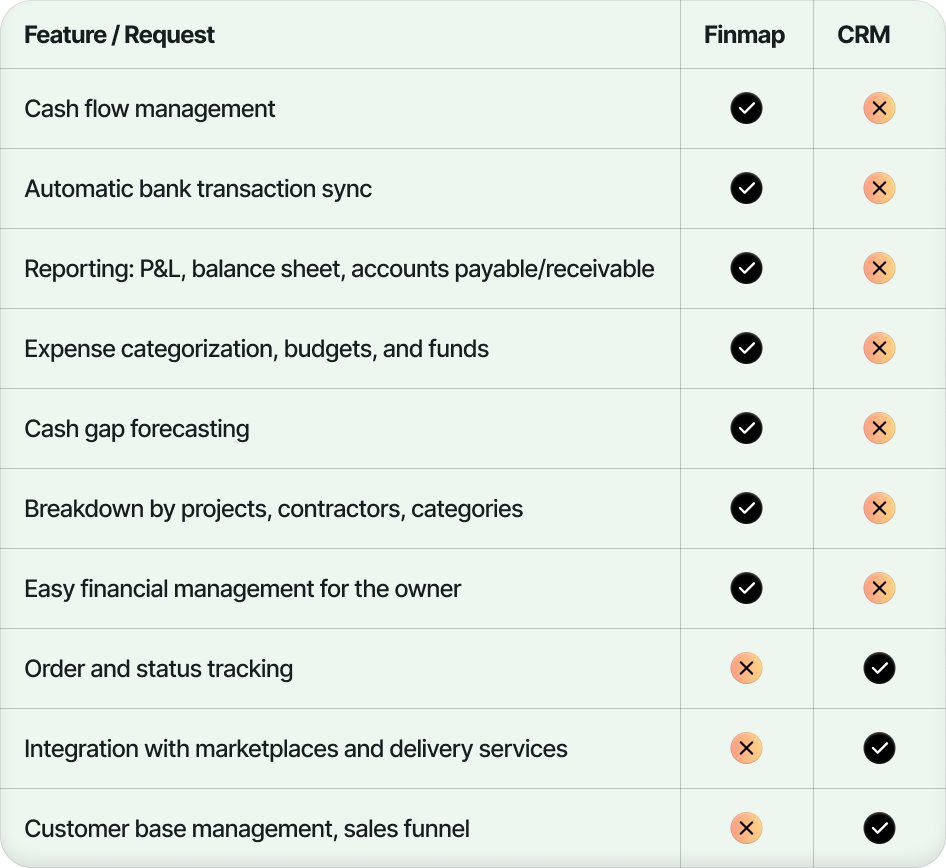
Result: At any moment, you see exactly how much money you have, where it came from, and where it's going.
This isn’t just convenient — it’s profit control.
Automate Your Finances — Manage the Business, Not Spreadsheets
Finmap helps you automate financial processes in just a few simple steps — without extra routines or constant manual control:

Result: All your data updates automatically. No errors. No delays. You finally free up time for strategic decisions, growing your business, and increasing profits — instead of chasing numbers.
“Projects” Report — See Profitability by Business Line
Want to know what actually brings profit:
Sales from Amazon or Instagram? Wholesale or retail? B2B or dropshipping?
Finmap lets you break your business into separate “projects” — by sales channels, business lines, product lines, brands, or marketplaces.
And then see income, expenses, and profit by each one.

Result: You make decisions based on margin and profitability. You scale what works — and cut what drags you down.
Payment Calendar — Your Financial Planner
Tired of putting out fires?
With Finmap, you see all upcoming income and expenses day by day — and can spot potential cash gaps before they happen.
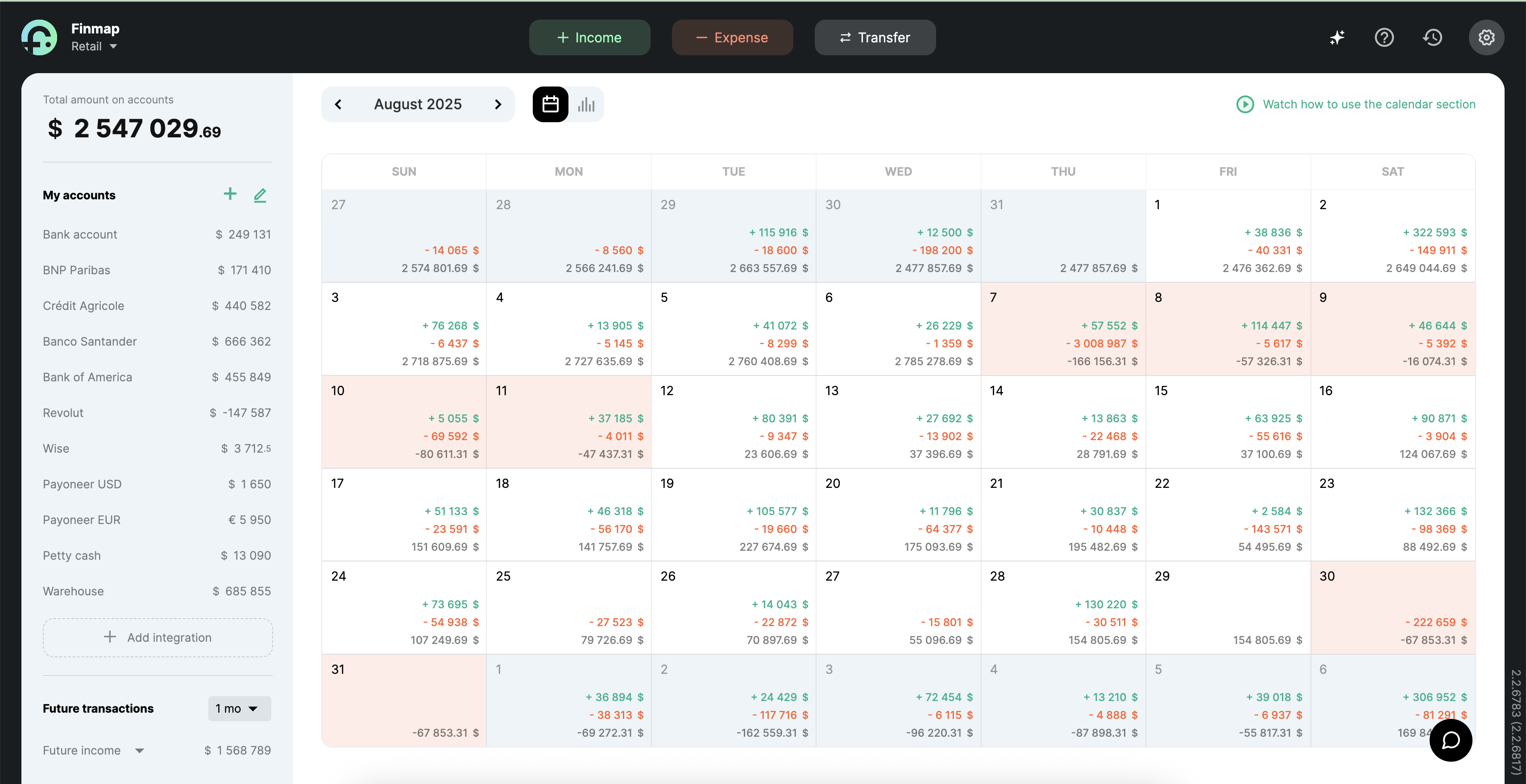
Result: You plan cash flow ahead of time, meet your payment obligations on schedule, avoid shortfalls, and manage your business proactively — not in panic mode.
Inventory in Money Terms — See Profit, Not Just Stock
You bought the goods but haven’t sold them yet. The money’s already gone — but the profit hasn’t come in.
Create a separate “Warehouse” account in Finmap, where you’ll track inventory movements in money terms, not just item counts.
Result: You see exactly how much you earn from the products you’ve sold.
You don’t confuse spending with assets — especially critical for businesses with large inventory balances.
Control Payables and Receivables — Avoid Cash Gaps and Losses
Many businesses lose money not because of low sales, but because they don’t get paid on time — or fail to track their own obligations.
Finmap lets you track every debt: who owes you, how much, and when it’s due.
And vice versa — who you owe, payment dates, what’s already paid, and what’s still outstanding.
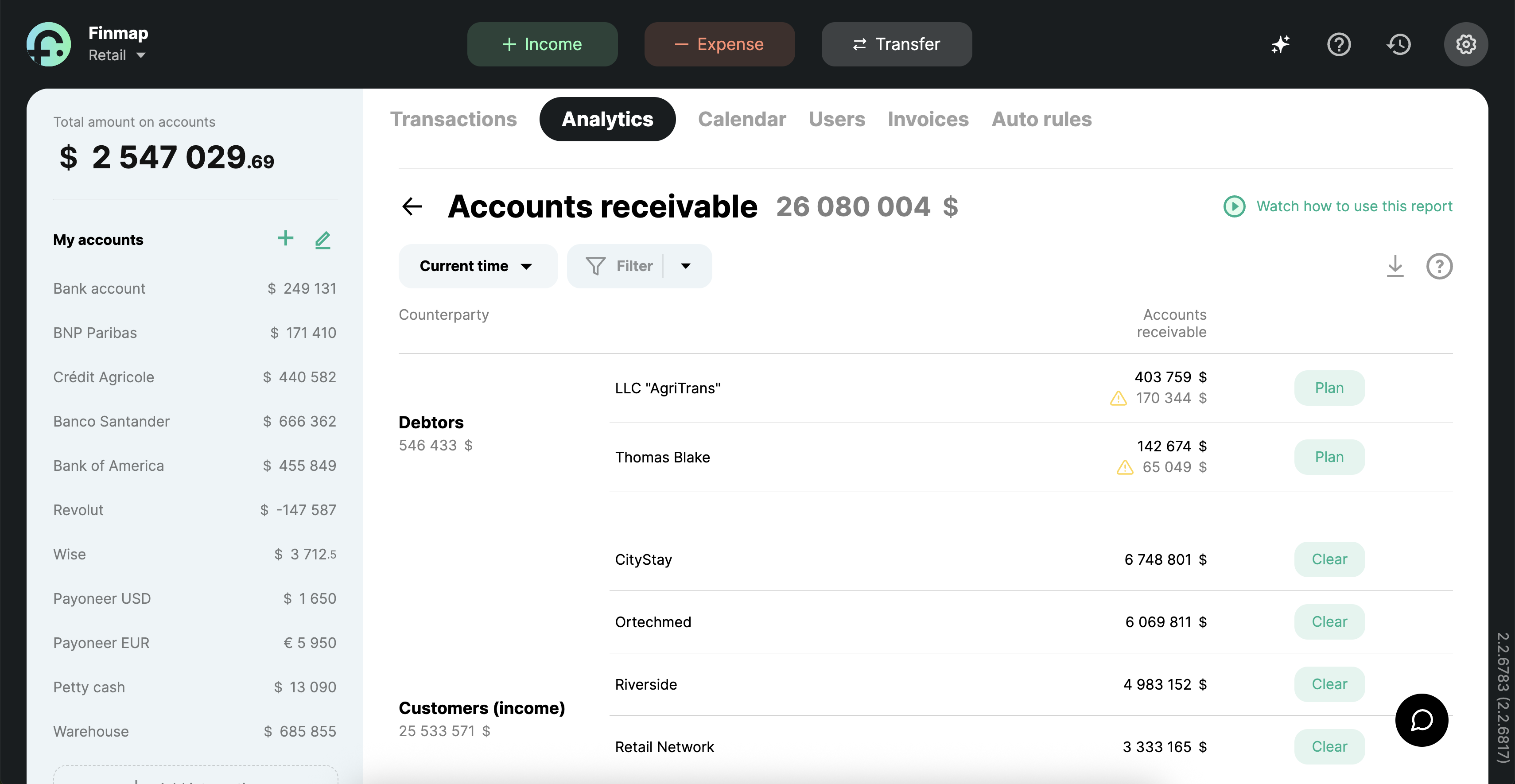
Result: All your receivables and payables are under control. No more forgotten payments, lost clients, or damaged reputation. You can forecast cash gaps, manage working capital, and know exactly what you can count on.
A Flexible Tool for All Your Needs
Beyond core features, Finmap easily adapts to the way your business works. You can:
- Track salaries and bonuses paid to your team
- Delegate routine tasks to employees using flexible access rights
- Analyze profitability by client, marketplace, or ad campaign
- Monitor how much each team member earns and spends
- Send invoices and track client payments
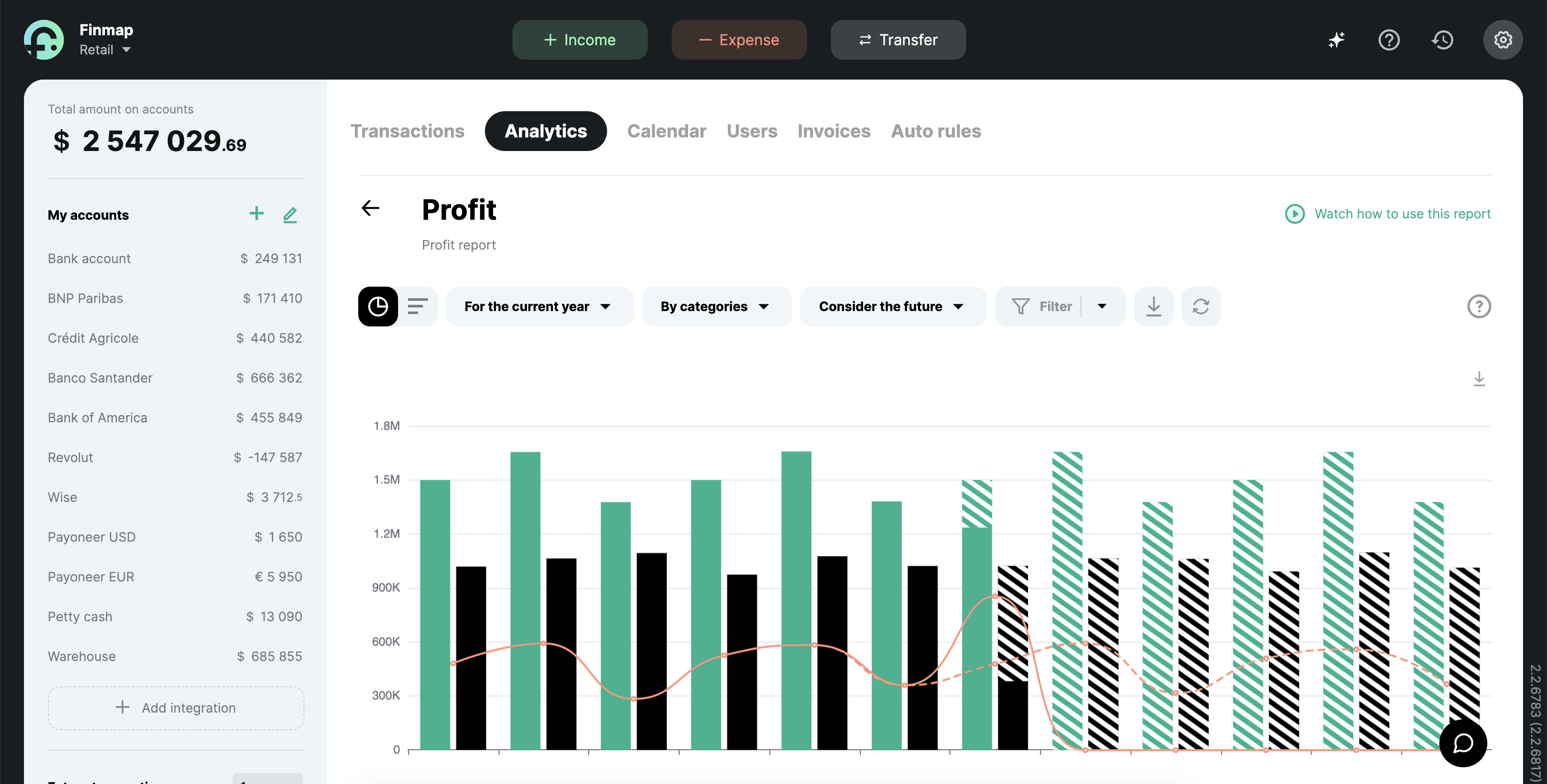
Result: You don’t just get accounting — you get a financial system tailored to your business. From day-to-day operations to strategic analytics — everything that affects your profits is under control in one workspace.
Finmap Client Case: From Financial Chaos to Strategic Management
Klebrig is a hypermarket of chemical products that repackages and sells chemical goods. They operate their own production of products for household and food industry use and deal with a large product catalog, regular procurement, and constant logistics costs.

Before implementing Finmap, their financial management was limited to Excel sheets. The accountant handled taxes, but the owner didn’t trust the overall financial picture.
It was only after the founder, Andriy, stepped out of daily operations and started tracking money himself that he discovered serious gaps:
cash flow problems, no control over operating and working capital expenses, and inaccurate P&L analysis.
There were days when the money simply wasn’t there — but I knew it was supposed to come in.
Managing money and actually seeing the big picture are two different things. - Andriy Femyak, founder of Klebrig
At first, they used Finmap just to track money and centralize all financial sources in one system.
But once Andriy explored it further, he realized that Finmap is a comprehensive financial management tool showing the full picture:
income, expenses, working capital, and liabilities.
Initially, Finmap was just a payment tracker. But over time, it became an analytical system — helping us assess profitability, plan investments, and avoid financial mistakes. - Andriy Femyak, founder of Klebrig
The company built its financial system around three core components:
- P&L reporting — to assess profitability monthly and identify unprofitable areas
- Cash flow forecasting — to plan working capital and see when actual funds would be available
- Expense control — to structure costs across operations, procurement, and growth
As a result, financial decisions in the company are no longer made at random.
Financial decisions are no longer based on guesswork. The business sees not just what has happened — but what’s coming next:
When the money will arrive, whether it’s enough for raw materials, and if there’s a reserve for investments.
That allowed Klebrig not only to stabilize finances — but to shift toward strategic financial management.
A word of advice from Andriy to other entrepreneurs:
Before you invest in anything, clearly separate what counts as operational expenses and what counts as working capital.
Calculate full cost — including logistics, packaging, and fees. Without that, no investment will bring you profit.
Finmap: Financial Control for Retail and E-commerce
This isn’t just a convenient tool — it’s a mission-critical foundation for your business’s stability, growth, and profitability. Finmap:
- Brings together all income and expense sources into one system
- Automates financial management
- Shows profitability by product, sales channel, and business direction
- Helps forecast cash gaps
- Tracks business and product seasonality
- Controls receivables and payables
- Gives you the complete financial picture for confident decision-making
Finmap is your foundation for real profits and scalable growth.
With Finmap, you don’t have to guess where your money is — you know.
Launch your financial system today — and start earning, not just selling.
Frequently Asked Questions about Financial Management in Retail and E-commerce
1. We already have a CRM. Why do we need Finmap too?
A CRM manages orders — not your money. It doesn’t account for actual expenses, show cash gaps, or provide P&L reports.
Finmap answers the core question: Is your business profitable, not just selling?
2. We use Excel for everything. Isn’t that also financial management?
Not really. Excel means manual work, constant errors, and outdated info.
Finmap automates it all, syncs with your banks, and gives you real-time financial visibility — not “after-the-fact” reconciliations.
3. We’re a small business. Do we really need a system like this?
Small businesses often suffer the most from cash gaps and poor spending decisions.
Finmap isn’t about company size — it’s about control. Start small so you can grow with confidence.
4. We’re already profitable. Why add another system?
Profit without transparency is luck, not strategy.
Without control over cash flow, margins, and obligations, you can’t scale safely.
Even profitable businesses can burn out from one cash gap if they’re not planning ahead.
5. Can Finmap show which products and channels are profitable?
Absolutely. You’ll see profitability by product, channel, or marketplace — so you can double down on what works and cut what drains resources.
6. I’m not a finance expert. Will I even understand it?
Finmap isn’t made for accountants — it’s made for business owners.
Clean dashboards, clear reports, no jargon.
Your financial picture is just a few clicks away — so you can make smart decisions without getting buried in spreadsheets.




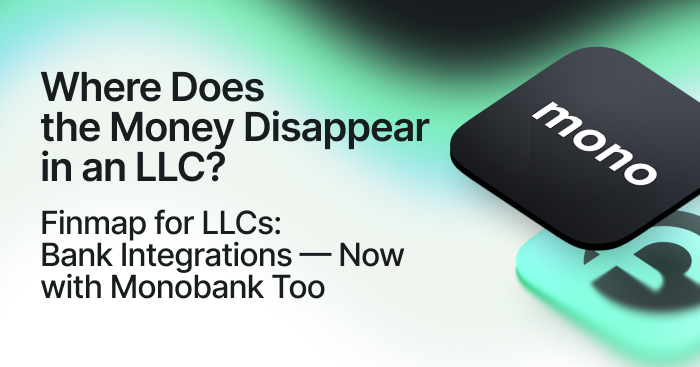
.jpg)
.jpg)